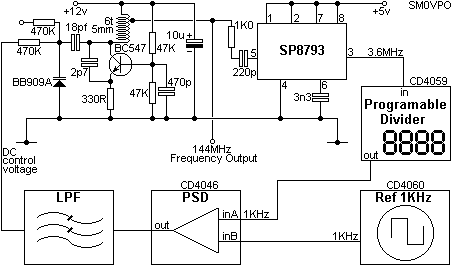

- #THE SIGNAL PATH CLASS C POWER AMPLIFIER TUTORIAL UPGRADE#
- #THE SIGNAL PATH CLASS C POWER AMPLIFIER TUTORIAL FREE#
The V(CE) is the difference in voltage between Collector and Emitter terminals while V(BE) is the difference in voltage between Base and Emitter terminals. So basically a small gate at base can lift up a large gate at collector. There is a big blue gate near the collector terminal which opens up automatically when we open the small pink gate present near the base terminal. The base terminal is shown as a big red B, while the collector and emitter terminals are shown as big blue C and big green E respectively.

On the top left we have three types of currents I(B), shown in red, I(C), shown in blue and I(E), shown in green. The build quality and the ability to micro-manage gain juiced my expectation bias and I thought it sounded great.The above diagram shows the different components that are present inside and outside an NPN transistor. I owned a Gustard H10 for several years and liked it a lot.
#THE SIGNAL PATH CLASS C POWER AMPLIFIER TUTORIAL FREE#
I wonder if they would send ASR a free set for testing? In the photo those really tall red things are Burson op amps. It would be interesting to see how Burson or other op amps impact the measurements.

Because they are socketed op amp swapping is very popular among H10 owners. While the amp is no longer made you can still get the op amps.
#THE SIGNAL PATH CLASS C POWER AMPLIFIER TUTORIAL UPGRADE#
I believe the H10 was the first amp Burson Audio made upgrade kits for. You should also really look at the insides to see if the four socketed Op Amps are original. It is likely the screws at the back are loose. In the attached photo you can see the volume pot is at the back of the chassis connected by a metal rod. You really should look inside the Gustard because it could solve the loose volume knob problem. The Violectric has a single toroidal transformer, the Gustard has two. If you look inside both you will see similarities and differences. I understand the design was copied from the Violectric V200. I make this simple: I need more money!!! Please donate using: See if you can pick one up in the used market before folks read this review.Īs always, questions, comments, recommendations, etc. Overally, based on good measurements and very impressive subjective listening, I am happy to recommend the Gustard H10. Its balanced input terminals help eliminate nasty ground loops and that is all you need. The Gustard H10 though takes its revenge due to copious amount of power it delivers at exceedingly low distortion with no need to mess around with balanced headphone jacks and such. So the match is no longer even and the H10 falls behind. Times have changed though since it came out and other products have claimed the top of the kingdom (Benchmark HPA4, Massdrop/drop THX 789 AAA and JDS Labs Atom). Just good old high-fidelity and transparent sound.įrom measurement point of view, the Gustard H10 shows competence with no gross errors. Mind you, there is no "class A" magic here. It was so nice that I kept listening after the testing was over! Switching to Hifiman HE-400i showed another excellent performance with abundant amount of power and fidelity. Man, there is so much power available here to not only shake out the cobwebs from the transducers but your eardrum as well! As a result there is plenty of bass, detail and impact even in lowest gain setting. I started testing with Sennheiser HD-650.


 0 kommentar(er)
0 kommentar(er)
